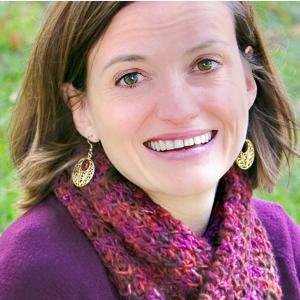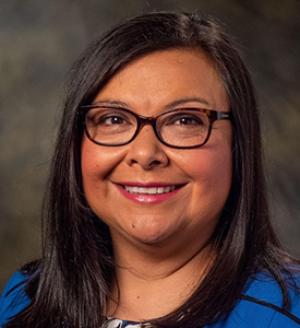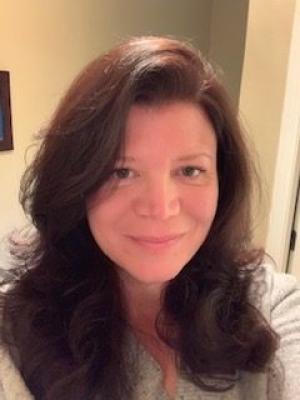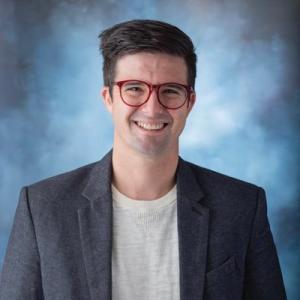Resources

One recent Saturday afternoon, I visit the Hindu Temple of Atlanta in Riverdale, Georgia, for a conversation with one of the priests about my current research. I spend time walking through both the Vishnu and the Shiva temples, appreciating the various deities and trying to embody a respectful posture as devotees and priests go about their ordinary acts of devotion. I feel both familiarity and discomfort. I recognize the rituals and much, if not all, of the iconography, and I am interested to see what has changed since the last time I visited. People are hospitable, welcoming me and my spouse without overwhelming us. At the same time, I am aware of my own identity, not being a practicing Hindu, or a South Asian person. In this space, I am aware of being hyper-visible, of being obviously a visitor, an observer rather than a full participant in the life of the community. What is to be learned from the experience of being a guest? Maybe the slight discomfort itself is valuable learning: the feeling of being uncertain, an interested outsider in a space that will never be my own. I recognize that the discomfort comes from not being “at home,” being a guest rather than a host. Of course, being a guest can be more uncomfortable than my temple visit. As guests in other people’s homes, sometimes we are offered food that is not palatable to us. We may not receive what we regard as enough to eat, or we may be expected to eat more than is comfortable. We may not be comfortable in the bed, or with the patterns of sleeping and rising. This discomfort of being a “guest” has helped me think afresh about the complexity of racial dynamics in institutions. Being a guest makes me aware of how difficult and how vital it is to make people welcome, to consider what is needed to be truly comfortable in a new place. In a recent blog, Lynne Westfield reflects on how BIPOC faculty do not always feel welcome in predominantly white institutions (PWI). She reports, “the majority of BIPOC colleagues who leave employment after less than three years report that their reason for leaving hinges upon experiences of being treated inhospitably.” How might my experience of being a guest help me to be more hospitable to colleagues who feel always like a “guest,” never quite at home? In my current research, I am asking: what does it mean to offer to and receive food from a deity in Hindu (particularly Vaishnava) and Christian contexts? I am investigating the dynamics of offering puja (worship) and receiving prasada (blessed food) in Vaishnava practice, in comparison with the giving and receiving of food in Christian eucharist. In both cases, the guest/host dynamic is complex: for Vaishnavas, Vishnu is treated explicitly as guest, offered water and food and clothing to be comfortable and welcome. Devotees treat Vishnu as a guest so that he feels loved and cared for. Yet underlying this treatment is the understanding that Vishnu is also the creator of all things, the one who is ultimate Host. On the Christian side, there is more emphasis on Christ as host at the table (thus the very term “Lord’s Supper” as one name for the eucharist). God in Christ offers life, offers food to us, as the host of the feast. Yet in the gospel narratives of his life, Jesus is always a guest in other people’s homes, and narratives like Luke 24:13-35 explicitly present Jesus as guest who becomes host. In both cases, worshipers play the role of host, but not in an ultimate way. In both cases there is a delicious reversal of expectation of who is guest and who is host. How might such role reversals also be instructive? After all, just as we need to learn to be good hosts, so also we need to learn to be good guests. In her poem “Sakhi” (“close friend” or “bosom friend”), Indian Dalit poet Hira Bansode describes her initial delight at hosting a high-caste friend for dinner. However, her guest “smirks” at the food on the plate and complains that Bansode failed to serve buttermilk or yogurt at the end of the meal as expected. “I was sad then numb,” says Bansode. “But the next moment I came back to life. / A stone dropped in the water stirs up things on the bottom.” Bansode tells her “friend,” “You know in my childhood we didn’t even have milk for tea much less yoghurt or buttermilk / My mother cooked on sawdust she brought from the lumberyard wiping away the smoke from her eyes.” She defiantly concludes, ‘Are you going to tell me my mistakes?” Being a guest (and learning to be a good guest) has also informed my reflections on being a teacher. In the classroom, I am usually the “host,” setting the environment and the plan for the learners. But if being a guest can bring discomfort, how might this also be true for students? Does Vishnu, and does Jesus, offer wisdom in modeling what it means to be a good guest, allowing others to live into their roles as hosts? Perhaps this is exactly what collaborative learning processes help us to practice: taking turns being host and being guest in the classroom, so that all may feel truly welcome.
2023 AAR & SBL Annual Meetings Wabash Center Events Saturday, November 18th, 8:00 AM-10:00 AM New Teacher Breakfast By invitation only, new teachers will join together for breakfast and directed table conversations about the first three years of teaching. Location: MRC - Grand Ballroom: Salon J Saturday , November 18th, 12:00 PM-2:00 PM JoT and Blog Writers Luncheon For those hoping to broaden the reach and creativity of their scholarship, this luncheon will be an opportunity to learn more about blogging as a scholarly genre and practice! Join us as we share approaches, techniques, and generative writing exercises. This will be an interactive gathering intended to wide academic settings. Location MRC - Grand Ballroom: Salon J Facilitator Donald Quist University of Missouri Sunday, November 19th 12:00 AM-2:00 PM BIPOC Faculty Luncheon Are you an educator of color? Come to the BIOPOC Faculty Luncheon to connect, share, and learn from others in a supportive environment. We hope to explore self-care as an essential component of the teaching life within a network that cares about the successful navigation of the classroom, your institution, and academic career. Esteemed Womanist Ethicist Dr. Emilie Townes will be our featured speaker. She will share about self-care from the "rear view." Come hear Dr. Townes offer wisdom on self-care that takes her entire teaching and scholarly career into perspective. Location MRC - Grand Ballroom: Salon J Speaker Emilie Townes Sunday, November 19th 8:00 PM-10:00 PM Wabash Center Reception and Book Launch Come join us for drinks, tapas, DJ, music, and dessert as we celebrate the launch of Nancy Lynne Westfield's creative biography entitledGlimpses of Me and Mine! We will honor our work with faculty in religious studies departments and theological schools. Meet past, present, and future participants from Wabash Center workshops, colloquies, consultations, grants, and learn about current programming and resources to support your teaching. Location MRC - Grand Ballroom: CDE Speaker Nancy Lynne WestfieldWabash Center
Grace Kao is Professor of Ethics and the Sano Chair of Pacific & Asian American Theology at Claremont School of Theology and Joy McDougall is Associate Professor of Systematic Theology at Emory's Candler School of Theology. McDougall and Kao reflect upon the experience of participating in a Wabash Center grant project entitled, "Teaching at the Intersections: Re-Imagining Feminist, Womanist, Asian, Latin, and Indigenous Theological Pedagogies." The imaginative and generative project, using a case study approach, convened a diverse spectrum of colleagues to reflect pedagogically and programmatically to strengthen teaching.

Disclaimer: We are human. All of our actions are imperfect. So, chisme is imperfect as is every form of human communication. Yes. Chisme can be harmful and sinful. However, I ask that while reading and engaging this call and response, please spend some time imagining and listening to the possibilities of what attention to chisme can teach us about God-talk. Before moralizing chisme and discounting it as only sinful, join me in examining how chisme can function in the creation of wisdom through its messy, interwoven, and affective existence. I invite us to embrace that which “Enlarge the Space of Your Tent: Working Document for the Continental Stage, Synod 2021 -2024,” page 102 has asked of us: “The free and gratuitous attention to the other, which is the basis of listening, is not a limited resource to be jealously guarded, but an overflowing source that does not run out, but grows the more we draw from it.” OK. Now, I am going to share some chisme... We, like Jesus, are incarnated and our bodies know! [CALL] Humans only know through our bodies. As embryos grow in the womb and organs begin to develop, those organs begin to function. [RESPONSE] We, like Jesus, are incarnated and our bodies know! [CALL] Newborns recognize voices they hear regularly. [RESPONSE] We, like Jesus, are incarnated and our bodies know! [CALL] The movement and swaying of dancing in womb, in arms, on one’s own can be understood as a form of teaching into our traditions. For some this teaching happens in all of these places and spaces. For others, this form of teaching happens only in womb or in arms or on one’s own. However, in these places and spaces, our bodies attain wisdom. [RESPONSE] We, like Jesus, are incarnated and our bodies know! [CALL] Our bodies learn. [RESPONSE] We, like Jesus, are incarnated and our bodies know! [CALL] Our bodies also know when someone has mistreated us or when we have experienced the mistreatment of others. [RESPONSE] We, like Jesus, are incarnated and our bodies know! [CALL] Many Christians believe in creation as Imago Dei – created in the image and likeness of God. [RESPONSE] We, like Jesus, are incarnated and our bodies know! [CALL] And that image of God is three persons one God which we call the Trinity. [RESPONSE] We, like Jesus, are incarnated and our bodies know! [CALL] We believe that God chooses to experience life as fully human so the second person of the Trinity, the Word becomes Incarnate. We believe that this Incarnate Word was conceived and born by Mary and did not just drop into earth as an adult. Although, as Sor María Anna Águeda de San Ignacio reminds us that God could have chosen salvation history to occur in any way. [RESPONSE] We, like Jesus, are incarnated and our bodies know! [CALL] The Greek word for God is Theós Θεός [RESPONSE] We, like Jesus, are incarnated and our bodies know! [CALL] Logos is Greek for both Word and reason. [RESPONSE] We, like Jesus, are incarnated and our bodies know! [CALL] We can then build on the wisdom of Diana Hayes and say that theology is God-talk. It is also a nod to the Incarnate Word. It is also a nod to how we as humans grow wise – reason – in relationship with God. [RESPONSE] We, like Jesus, are incarnated and our bodies know! [CALL] So, if theology is God-talk and the way we grow in wisdom and knowledge of God as scriptures say about the infant Jesus, then our ways of communicating are directly linked to our own incarnations, our own fleshly existence, our own human bodies. AND… [RESPONSE] We, like Jesus, are incarnated and our bodies know! [CALL] Sure. Professional theologians study for many years to write and publish theology. But, everyone who engages in thinking about and communicating with the divine engages in God-talk, and in what I am calling theological languages. We engage theological languages through our own incarnations and with every difference and particularity which makes each one of us unique because… [RESPONSE] We, like Jesus, are incarnated and our bodies know! [CALL] We are people of God in places of God – el pueblo de Díos. Theological languages, therefore, exist in and through el pueblo de Díos. [RESPONSE] We, like Jesus, are incarnated and our bodies know! [CALL] One of these theological languages is chisme. Chisme contends with Truth from an experiential perspective. Chisme is incarnational and can be found in Christian scriptures. Chisme is a language of lo cotidiano. Chisme is its own contextualized form of communication related to gossip and the T. Chisme related to gossip has historically religious significance. Chisme related to the T critically contends with structures of power. [RESPONSE] We, like Jesus, are incarnated and our bodies know! [CALL] Phrases like “spilling the T”, “pouring the T”, and “the T is hot” connect our knowledge with many times unspoken truths known by our bodies. [RESPONSE] We, like Jesus, are incarnated and our bodies know!
Donald Quist is Assistant of English at the University of Missouri. Donald Quist discusses the developmental editing approach that helped create Glimpses of Me and Mine by Nancy Lynne Westfield. Their conversation describes the writing technique called fragmentation and how it is advantageous for scholarly writing. Westfield and Quist discuss the challenges and potential rewards of writing with intimacy, transparency, and personal disclosure in fiction and nonfiction.


My coach and I were discussing a difficult decision I needed to make for my newly acquired job. I confided the details of the situation to her, and she listened patiently. We discussed the dilemma and figured out some contingency strategies. As our conversation was winding down, she said the simple phrase, “Lynne, you got this.” I wanted to cry. I did not think I had it. I was inexperienced and struggling. But, when my coach told me I could navigate the difficult situation, I believed her, at least a little bit. Her belief in me brought me unexpected comfort and gladness. I needed someone to believe in me and say it out loud. When our students enter our classrooms, they bring who they are, along with their anxieties, uncertainties, fears, and so often, lack of confidence. The question is, while you are doing the difficult and increasingly complex job of teaching--who believes in you? My mother was my consummate cheerleader. My mother rooted for me all my life. When I attempted small things, she prayed, cheered, and supported. When I attempted enormous things like a doctorate degree or a new job, she prayed, cheered, and supported. In the years when I routinely traveled to do consultations or public speeches or to preach, my mother would ask me the time of my work so she could pray at those exact moments. I miss my mother’s undimmable support. She believed in me and her belief gave me confidence. We need people in our lives who understand that teaching, even when wildly rewarding, is challenging and this challenge cannot be accomplished alone. We need people who cheer us on. People who instill courage. People who help us to muster up our brave. Who believes in you and your work and supports you in your efforts? Find these people. Thank these people. If you do not have these people, get these people. Or, be that person for someone else. The Wabash Center requires letters of recommendation for workshop applications. In every batch of applications, we inevitably receive one or two letters of recommendation written by a dean or department chair for an applicant that is a meager one or two sentences of perfunctory prose. The letter is hurried, too brief for the needs and gravity of the application. Every time I read a flimsy letter of recommendation written by a too busy person, I feel sorry for the applying faculty colleague. If you are not going to write a thoughtful letter, perhaps be truthful and tell your colleagues that you cannot recommend them. Or, even better, take the time to write a decent letter of recommendation. These letters are moments to cheer on a colleague who is trying to better themselves and their teaching. Entertainers and athletes have the luxury of being cheered on by a crowd. Yes, they must live through, on occasion - jeers, sneers, boos—every now and then. However, much of their careers are spent being applauded. What if we gave our faculty a standing ovation or the equivalent? What would a round of applause for teachers be like in our schools? So many institutions single out one colleague and provide a “Teacher of the Year” award. Consider that, rather than fueling community, this individualizing gesture feeds contempt for one another. Teacher awards do not improve teaching. They do not communicate to faculties that they are appreciated. They only pit colleagues one against the other. Design new ways to celebrate all who are struggling to survive, all who show up to each class, all who meet their students with lesson plans, expectations, and dreams. Expressing to one another that we believe in what we are doing and that we support teachers and teaching will require, for many schools, a culture shift. Last week a young colleague told me that she was scheduled to give an important presentation at her school and, understandably, she was nervous. I penciled a note on my calendar so I could remember the date. Today I noticed my note and called my colleague. She reported that her presentation went quite well. I told her that I was proud of her and her accomplishment. I told her to continue her hard work. I told her I believed in her. I hope I instilled a bit of confidence. I hope she believed me when I said that I believed in her. I am going to tell colleagues in tangible ways that I believe in them. I am going to make a practice of penciling into my calendar, then following up with a phone call or email so colleagues know someone is rooting for them. Imagine the difference that could be made if we root for one another!
The Rev. Dr. Boyung Lee is Professor of Practical Theology at Iliff School of Theology. In this Silhouette Interview, Lee covers reflection over the impetus of her teaching, being mindful when what's being taught isn't being embodied, the path not trodden of being a physicist, and more.

They tell you that it gets easier. They are damned liars. Every single one of them. Each consecutive day is harder than the one before it, and it doesn’t start rosy. They arrive early. They don’t tell you that, either. Thirty-seven to thirty-eight weeks at the latest. Or twenty-nine. They don’t tell you just how small they are. Four pounds, one ounce and three pounds, two ounces in Nettie’s and Lucy’s case. They don’t tell you about how they’ll be immediately separated from one another in the NICU or the weeks you’ll spend there or how you’ll come to crave that coffee that tastes like it has been filtered through an old sock. They don’t tell you about forehead IVs. They don’t tell you about the nurses that are godsends and the doctors that are not. They tell you that you will eventually leave, but they don’t tell you when. They don’t tell you that you’ll cart around two vital sign monitors everywhere you go when you do. They don’t tell you about all the times that you’ll wake up panic-stricken at 2AM when the rhythmic beeping stops because the strap has slipped off their chest. Or about the time you will rush back to the NICU when it’s still on. They don’t tell you that there will be double the literal and metaphorical shit. Double everything: pain, joy, mess, love, difficulty. They don’t tell you that there will be two of them and they are each their own person. But there are and they are. They tell you that that season will pass. It will. But that doesn’t mean it gets easier. I became a parent of identical twins early in my teaching. I didn’t tell my students when my daughters were born. I believed in caring for my students as humans—cura personalis and all that—but I was also advised that I was not to be their friend. That there should be a distance to the professorial relationship. I also became a doctor that eventful semester. I didn’t tell my students when I defended my dissertation. I didn’t request that they start addressing me as “doctor” for the remainder of the semester. I shied away from accolades and self-promotion. One day after class a student inquired about the patient identification wristband I was wearing. I explained that I had not been hospitalized, but the band allowed me in and out of the NICU, where I had been sleeping and where Nettie and Lucy were to spend several weeks. The next class I received a handwritten note of congratulations and well wishes. In that moment I learned that caring for students as people involves more than just recognizing their humanity. It means allowing them to see ours as well. Three years later when my partner was diagnosed with cancer, voice cracking and holding back tears, I told my students of the diagnosis and positive prognosis. They sent notes. Gift cards. Signed up for my family’s MealTrain. Beth has now passed her one-year anniversary of showing no evidence of disease. We teach real humans. We are also ourselves real humans. There is no prescriptive practice for being human. There is also no prescriptive practice for putting our humanity on display within a learning community. But I have come to learn that bringing less than my full self to teaching is of benefit to no one.
The Future of Latinx Placemaking in the Academy Gathering July 29 - August 2, 2024 Wabash Center Crawfordsville, IN Leadership Team Cristian De La Rosa,Boston University School of Theology Gregory L. Cuéllar,Austin Presbyterian Theological Seminary Gina Robinson,Wabash Center Participants Jonathan Calvillo, Candler School of Theology Francisco Castillo, Loyola Institute for Ministry David Escobar Arcay, Palm Beach Atlantic University Oscar Garcia-Johnson, Fuller Theological Seminary Chauncey Diego Francisco Handy, Reed College Débora Junker, Garrett-Evangelical Theological Seminary Kristina Lizardy-Hajbi, Iliff School of Theology Roberto Mata, Santa Clara University Néstor Medina, Emmanuel College of Victoria University in the University of Toronto Adriana Nieto,Metropolitan State University of Denver Altagracia Perez-Bullard, Virginia Theological Seminary Lis Valle-Ruiz, McCormick Theological Seminary Honorarium and Fellowship Participants will receive an honorarium of $3,000 for full participation in the Conversation. Read More about Payment of Participants Important Information Foreign National Information Form Policy on Participation Description This roundtable will gather Latinx faculty members from diverse scholarly specializations and institutional contexts to address the challenges and possibilities of Latinx placemaking within contradictory contexts. We will approach our cohort as a community of inquiry and practice, wherein we will collectively and creatively lament, innovate, and create places and spaces to celebrate our own resilience in the face of anti-border laws, state-sanctioned violence, institutional racism, and coloniality. As a collaborative learning cohort of teacher-scholars, we will explore such topics as: Indigenous placemaking within Latinidad Afro-Latinidades, placemaking, and inclusion Latinx joy and healing (social, emotional, psychological) Border-crosssing as a life-giving strategy Goals Retrieval of ancestral resources within our own academic journeys Carefully exploring and identifying our own journey in the academy by making ratablos Share and exchange wisdom on how to navigate strategically colonizing forces on our identities and practices. Exploring the future of placemaking for Latinx scholars in the academy Questions How can Latinx studies consider placemaking in contradictory contexts? Hows do Latinx scholars create a sense of place and space in the face of harmful rhetoric? How do Latinx scholars celebrate their resilience in the face of anti-border laws, state-sanctioned violence, institutional racism, and coloniality? What can we learn from our ancestors who were displaced by empire and within our own academic discipline? What is the future of placemaking in the academy?